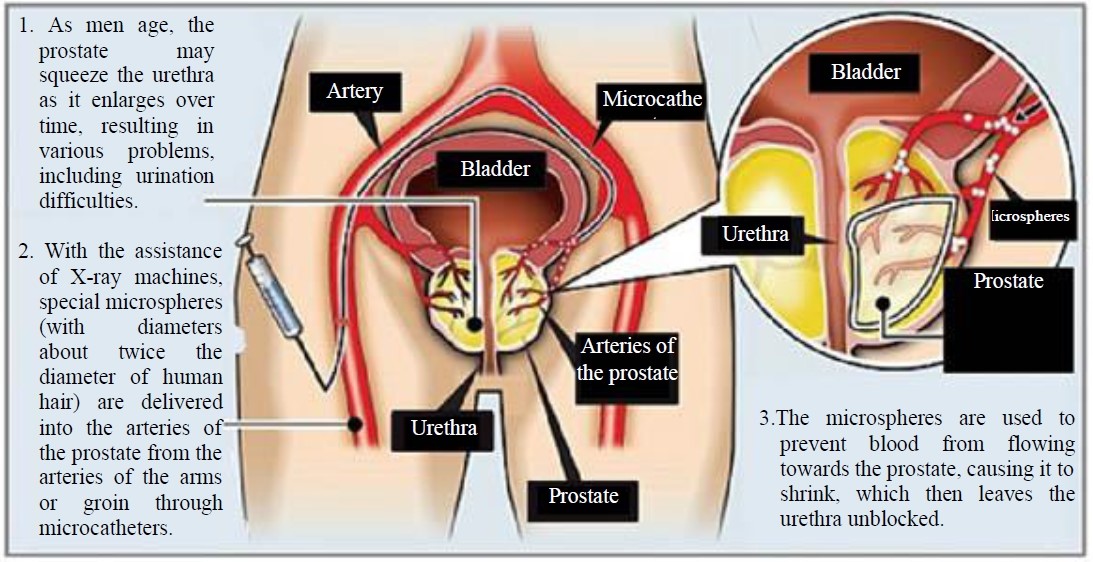Prostatic Arterial Embolization (Prostate Volume Reduction)
The incidence rate of benign prostatic hyperplasia, a problem encountered by all men, increases with age. As the microsphere volume reduction surgical technique, unlike traditional urological surgical techniques, can treat benign prostatic hyperplasia more effectively and reduce the complications caused by traditional surgeries, it has become a new trend in the treatment of benign prostatic hyperplasia.
As benign prostatic hyperplasia is a common phenomenon in aging men, health examinations should be received regularly to enable early diagnosis. The prostate tends to enlarge with age; however, if this can be controlled early, not only urination symptoms and the quality of life can be improved, but also problems, such as complications caused by urinary retention, can be avoided.
Prostatic Arterial Embolization (PAE) | Main indications
Problems in men such as having a weak or intermittent urine stream, slow urine flow rate, incomplete urination, and frequently awakening from sleep to urinate, are often symptoms that are caused by benign prostatic hyperplasia.
Prostatic Arterial Embolization (PAE) | Surgery procedure
1. Prior to the surgery, examinations such as ultrasound and magnetic resonance imaging are conducted to examine the prostatic volume and degree of prostatic hyperplasia.
2. Prostate imaging is performed to check the volume and location of the prostate
3. Microspheres are administered through catheters for prostate volume reduction
4. Discharge on the day of the outpatient surgery/discharge on the next day of the inpatient surgery

Prostatic Arterial Embolization (PAE) | Features of the surgery
✔ Does not affect sexual functions
✔ Speedy post-surgery recovery
✔ Short hospitalization period
✔ Outpatient surgeries without hospitalization may be performed under appropriate circumstances
 Contact Us
Contact Us FB Customer Service
FB Customer Service LINE Customer Service
LINE Customer Service